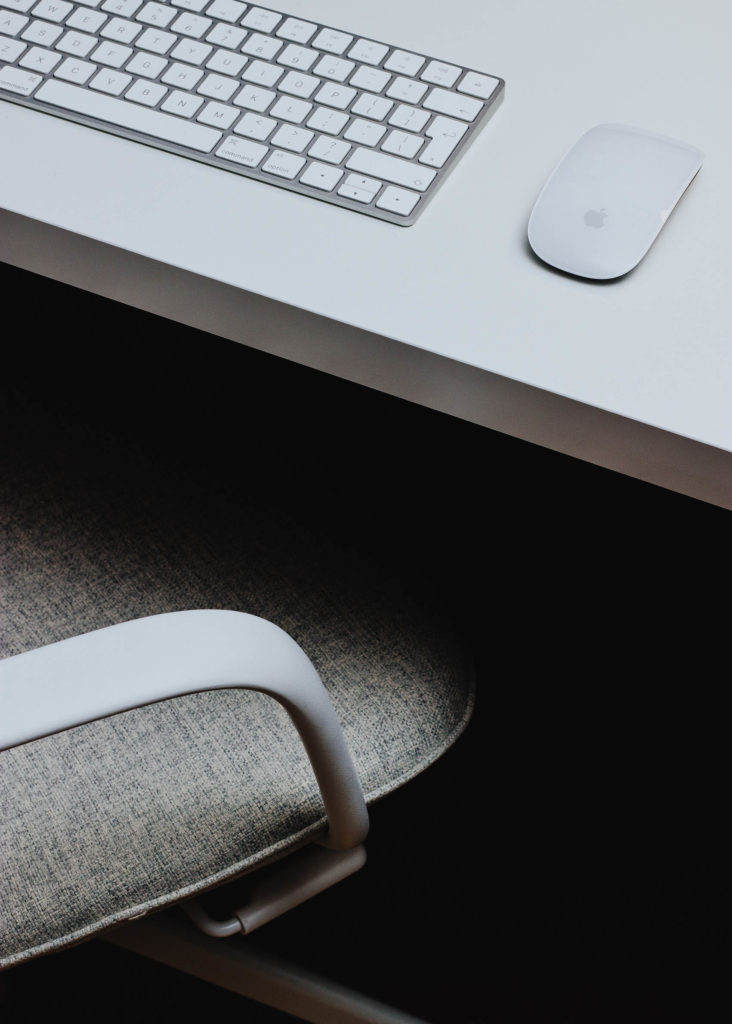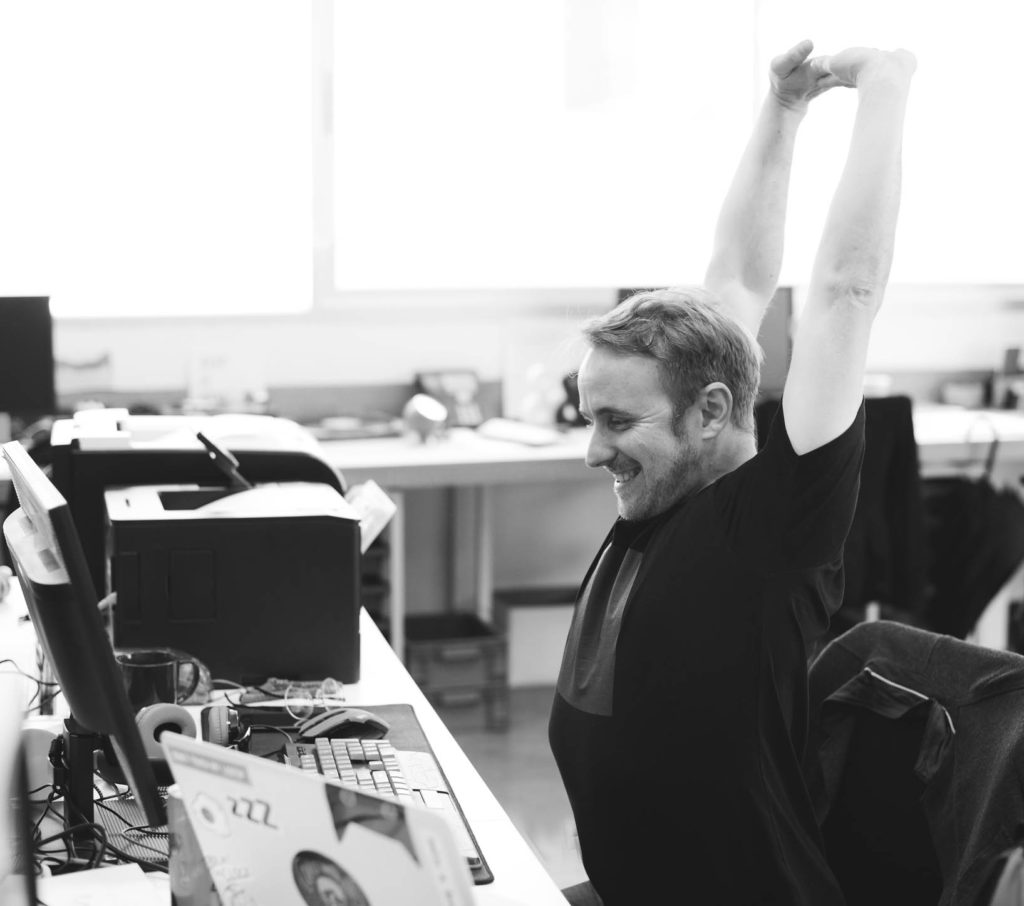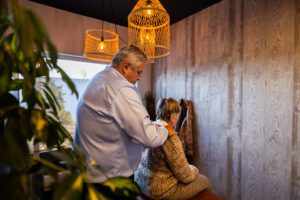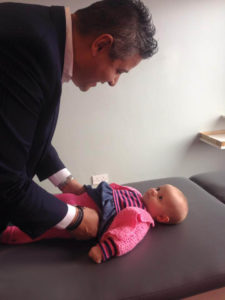In a computer intensive world, ergonomic issues (especially with regards to the height of a chair) has become important. Ergonomics is a tricky art to do properly, especially when it comes to the armrest.
With the armrest, the whole purpose was to take stress off the shoulders.
This is needed in the short term but not in the long term because the arm rest shortens muscles and tissue in shoulder, neck and back. Muscles need to be stretched and relaxed.
The ergonomics that is being designed is to encourage the weight of this joint to drop on the armrest and nothing is done to encourage the shoulders to drop and to lengthen the tissues.
For example, from propping your arms on something one can develop ulnar nerve damage (Cubital tunnel syndrome) which is a relatively common injury in those that work at a desk job. This nerve runs to the elbow and outside of the hand to the pinky side of the wrist. So it’s something to watch out for if you get pain, numbness or tingling in the pinky side of the hand.
Resting the arms can be a real issue with problems arising in the elbow, arm or wrist.
Watch martial artists or a tai chi master, their shoulders are always dropped and they never hold tension in their shoulders.
When shoulders drop and are relaxed you will feel the difference of energy flow to the neck and back. Try it! These guys don’t lift their shoulders at all and they stays down as they reach overhead or across.
At Optimal Chiropractic we see patients with neck, shoulder and arm tension all the time.
With prolonged keyboard use these shortened muscles develop scar tissue from repetitive stress injuries. In order to stabilise this joint we have to break the scar tissue, mobilise the joint and I request our practice members to stop using the arm rest while at work. I also urge them to take breaks to stretch and put movement into the stagnate joints.
If you ever experience pain in the elbow, wrist or arm please do see your local Chiropractor.
If you are near Ballincollig we are always here to help. Call us on 021 487 8465















12 responses
Thanks Scott, glad you found it helpful!
Thanks, this was very timely info for me.
You’re welcome
Ergonomics is for sure a tricky art! Especially with so many of us working remotely and trying to figure it out on our own. This was helpful – thanks so much! 😊
You’re welcome
I’ve developed bilateral tennis elbow from working a desk job the past 6 years. I’ve begun searching around and came across this article, because I almost feel like resting my arms is contributing to my pain and discomfort. I’ve decided after reading this article to remove my chair armrests to see if things can improve with me removing pressure off/on throughout the weeks.
Stretching exercises don’t necessarily seem to help me, but if I take a few weeks off from work, remove the armrests, AND stick to low weight stretches….I might finally fix this problem that has plagued me for 2 years. Note – I do not suffer from any tingling (carpal tunnel) and my EKG showed no signs of pinched nerves, so that’s why I was diagnosed with bilateral tennis elbow.
Constant wrist, forearms, and elbow pain all the time. Sigh.
Sorry to hear you’re struggling with those symptoms. Definitely try without the arm rests and hopefully this helps. Best of luck with it
Did removing the arm rests help?
I think the constant propping of my elbows has caused pain in my left shoulder, scapula and neck. I am not certain, but it is my current working hypothesis. I am right handed so I hold my phone in my left hand and the elbow is propped. If I’m at home, I’m in my recliner and my elbows are propped. If I’m driving my left elbow is propped. If I’m at work at my desk and hold my phone which I do a lot, my elbows are propped. As I think about it, it is a very large part of my day in this position. It is almost constant. The right arm gets stretched out because I use it to type in the phone, use the remote, mouse etc, and, therfore, it is not propped nearly as often. In my opinion, this has shortened the muscles and ligaments in the left upper back and neck and caused the scapula to be pushed up and therfore leading to inflammation in the area cervical spine and shoulder area causing some resulting somatic dysfunction and malalignment. It has mimicked radiculopathy almost identically but the MRI shows no impingement. I have degenerative disc disease so this has likely quickened the above symptoms as well. I have also allowed my posture to become poor. I just started some stretches to try and correct this. I just had this pop into my head as a possibility and took to Google to see if anyone else had thoughts on it and came across your site. Thank you for your work. We shall see if I improve.
Hope the tips help. Your hypothesis seems to be valid
I’ve noticed that when I work from home I get pain in wrist / elbow / forearm. I rarely work from home, but did so for one day last week, and ever since I’ve been in a lot of pain / discomfort.
The difference I’ve identified is that at home I *don’t* have armrests, whereas in work I do. So this seems to be the reverse of what you are saying. Any possible explanation?
Hi David, in your case, arm rests suit you more at the moment because the muscles have all shortened due to prolonged use at work. There could also be a number of other factors involved when you work from home rather than the office. Many people find that they don’t take as many breaks at home and often don’t move around as much as everything is just closer than having to move around the office. The best way to find out would be to try your home chair in the work office and see if you still get issues